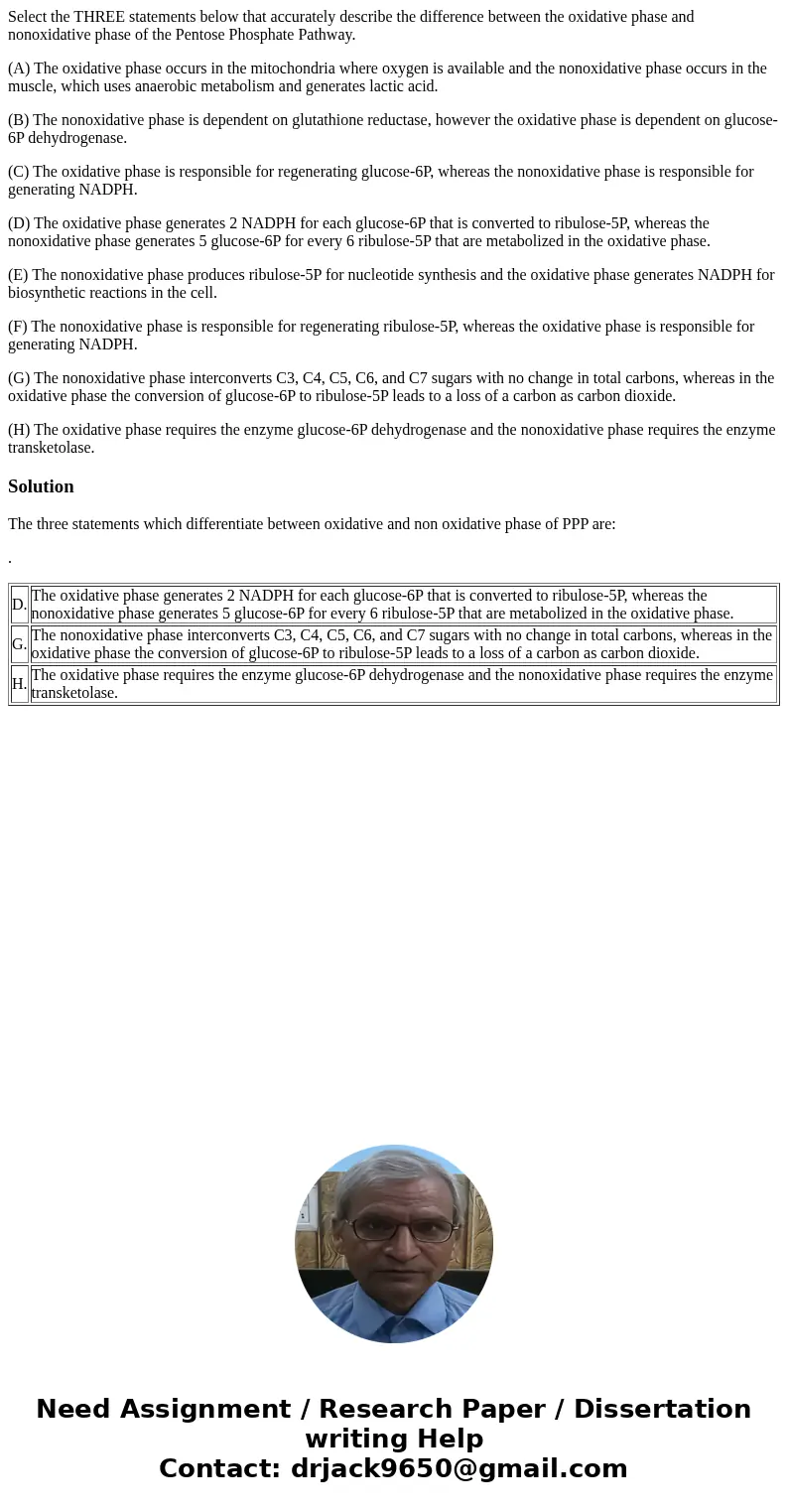Select the THREE statements below that accurately describe t
Select the THREE statements below that accurately describe the difference between the oxidative phase and nonoxidative phase of the Pentose Phosphate Pathway.
(A) The oxidative phase occurs in the mitochondria where oxygen is available and the nonoxidative phase occurs in the muscle, which uses anaerobic metabolism and generates lactic acid.
(B) The nonoxidative phase is dependent on glutathione reductase, however the oxidative phase is dependent on glucose-6P dehydrogenase.
(C) The oxidative phase is responsible for regenerating glucose-6P, whereas the nonoxidative phase is responsible for generating NADPH.
(D) The oxidative phase generates 2 NADPH for each glucose-6P that is converted to ribulose-5P, whereas the nonoxidative phase generates 5 glucose-6P for every 6 ribulose-5P that are metabolized in the oxidative phase.
(E) The nonoxidative phase produces ribulose-5P for nucleotide synthesis and the oxidative phase generates NADPH for biosynthetic reactions in the cell.
(F) The nonoxidative phase is responsible for regenerating ribulose-5P, whereas the oxidative phase is responsible for generating NADPH.
(G) The nonoxidative phase interconverts C3, C4, C5, C6, and C7 sugars with no change in total carbons, whereas in the oxidative phase the conversion of glucose-6P to ribulose-5P leads to a loss of a carbon as carbon dioxide.
(H) The oxidative phase requires the enzyme glucose-6P dehydrogenase and the nonoxidative phase requires the enzyme transketolase.
Solution
The three statements which differentiate between oxidative and non oxidative phase of PPP are:
.
| D. | The oxidative phase generates 2 NADPH for each glucose-6P that is converted to ribulose-5P, whereas the nonoxidative phase generates 5 glucose-6P for every 6 ribulose-5P that are metabolized in the oxidative phase. |
| G. | The nonoxidative phase interconverts C3, C4, C5, C6, and C7 sugars with no change in total carbons, whereas in the oxidative phase the conversion of glucose-6P to ribulose-5P leads to a loss of a carbon as carbon dioxide. |
| H. | The oxidative phase requires the enzyme glucose-6P dehydrogenase and the nonoxidative phase requires the enzyme transketolase. |

 Homework Sourse
Homework Sourse